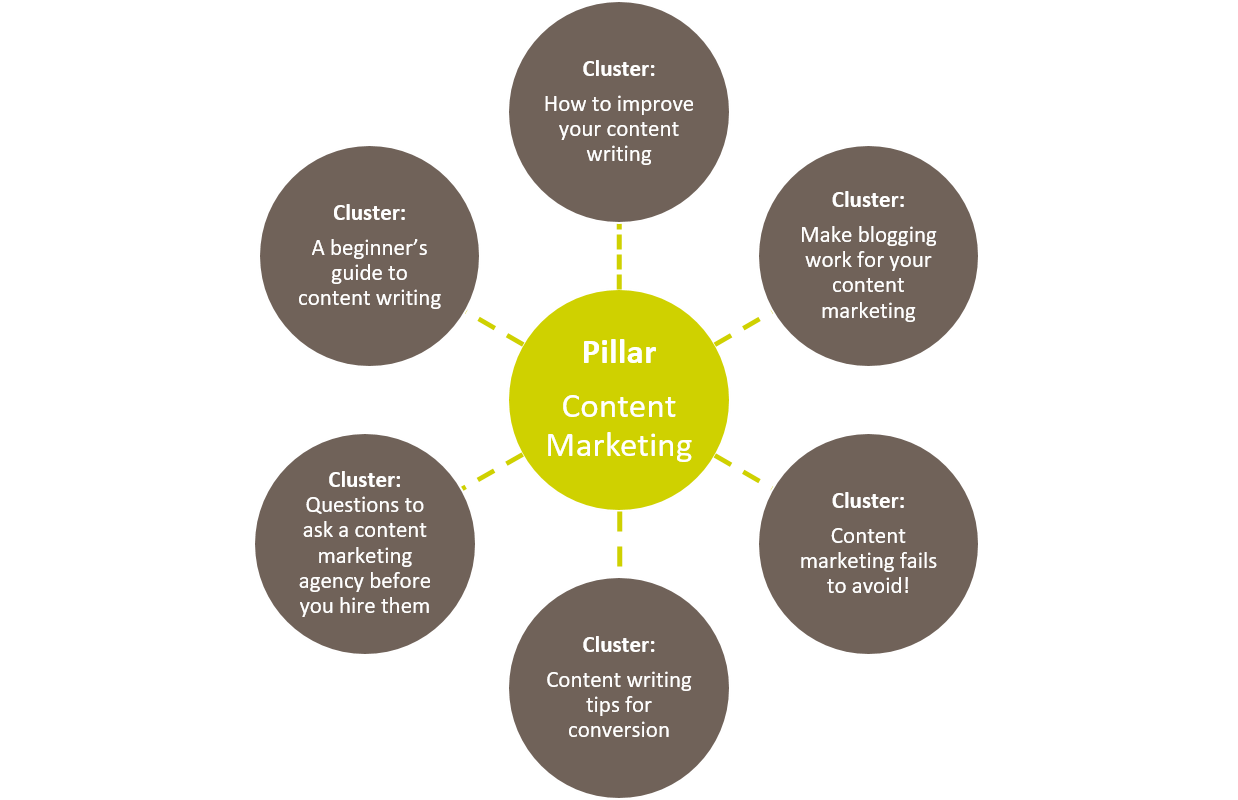SEO design solutions and content marketing has evolved, from changes in the way people search, to changes in the way marketers are developing content. As a result, search engines have altered their algorithms in favour of topic based content, giving way to a new kid on the SEO block - the “topic cluster” model. This new model organises content into a single “pillar” page which acts as the main hub of content and surrounding “cluster” content pages.
But what does this mean for your content marketing strategy? And how on earth does it all work anyway? Read on to find out.
Why the big change?
The way people search has changed. We no longer type keywords into search engines - instead, thanks to the rise of mobile and voice search, queries are becoming more conversational as people type in 'how to' questions or more general topics. The good news is that search engines are now smart enough to recognise these connections across different queries, with updates such as Hummingbird and RankBrain moving search algorithms away from a keyword focus to a topic focus so they can understand the context of people’s search queries. But it’s not just search engines that need to adapt - SEO design solutions need to reflect these changes too. And that’s exactly where the topic cluster model comes in…
What is a topic cluster model?
Most websites will have a homepage and a blog, but when it comes to targeting a keyword on that blog, there are thousands of relevant keywords and long tail variations out there. As a result, you end up writing post after post as you desperately try to capture the search traffic - meaning your website becomes repetitive, disorganised and crammed full of content that isn’t particularly useful. Sounds familiar, right?

A common response to this is to panic and create more content - but creating large volumes of the same content often delivers underwhelming results at an overwhelming expense. This actually makes it harder for search engines to crawl through the pages, taking you right back to square one - and right to the bottom of the results page.
The solution? Topic clusters that provide a more orderly arrangement so search engines know exactly which pages should be prioritised and displayed for a main topic as well as organising the pages relating to that topic in one cluster.
It’s an SEO strategy that focuses on topics rather than just keywords alone, meaning you can organise your website’s content using a cleaner and more deliberate site architecture, making it easier for Google to discover related content and boosting search engine visibility.
How does it work?
A topic cluster model works by having one large piece of pillar content that broadly outlines a chosen topic surrounded by a group of cluster content that focuses on specific long tail keywords. The pillar page links to each cluster page, whilst the cluster pages all link back to the pillar page with the same hyperlinked keyword so that all pieces of content compliment each other and work seamlessly together. This means that when one web page performs well, the entire topic cluster gets a boost.

It’s all about helping web crawlers make connections. Topic clusters signal to Google that there’s a semantic relationship between the content and that you are a trusted authority on the topic and worthy of a top spot in SERPs, meaning you can boost search engine rankings and provide a better user experience for your visitors. Basically, it’s a win win for everyone.
How to create a topic cluster
In order to create a topic cluster you need to start by auditing your existing content pages and grouping them into topics. If you don’t already have them, you then need to create pillar pages that broadly cover your chosen topic and tie in well with all of the cluster content linking to it.
To ensure everything can be discovered by potential customers and crawled by spiders, this content shouldn’t be locked behind a form or password and should apply consistent on-page best SEO solutions practices. Once you’ve sorted your pillar page, you’ll then need to update the links in the related content pages to form a cluster around it - just remember that every post in the cluster needs to be linked to at least once so that search engines know it’s part of a topic cluster.
SEO design solutions and content marketing is constantly evolving - and in order to keep up with the competition, you need to change with it. Cluster content is a great way to deliver higher rankings and greater authority as well as boost traffic and improve your results from every piece of content you publish.
Is your SEO design solution working as hard as you need it to? Request your free healthcheck and SEO audit and plan a content strategy that’s fit for the future.










